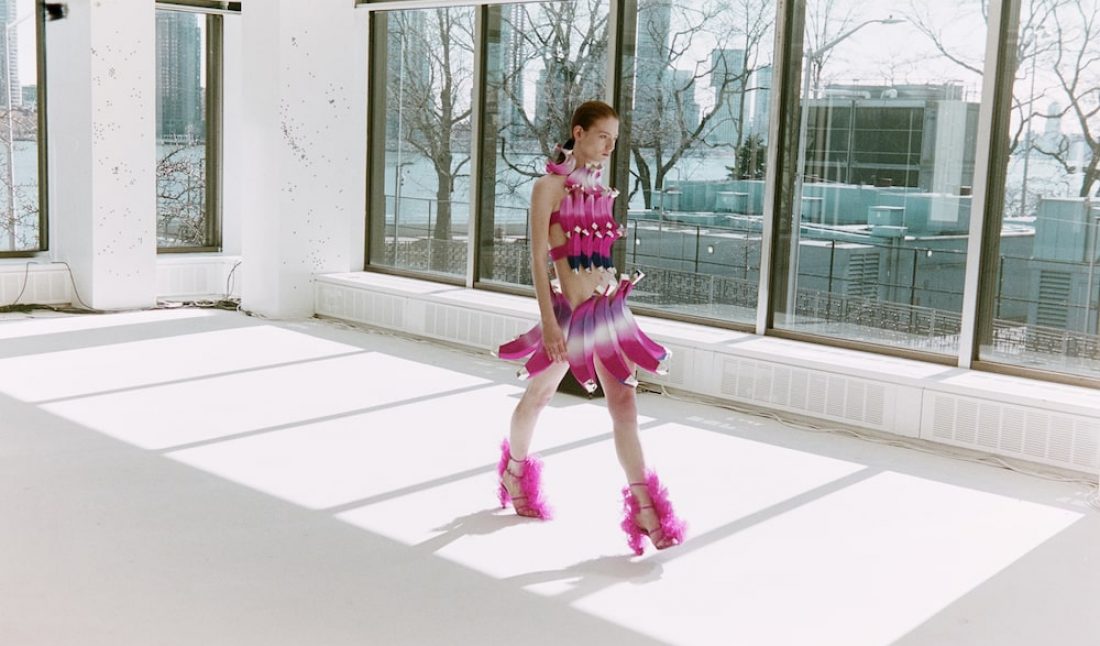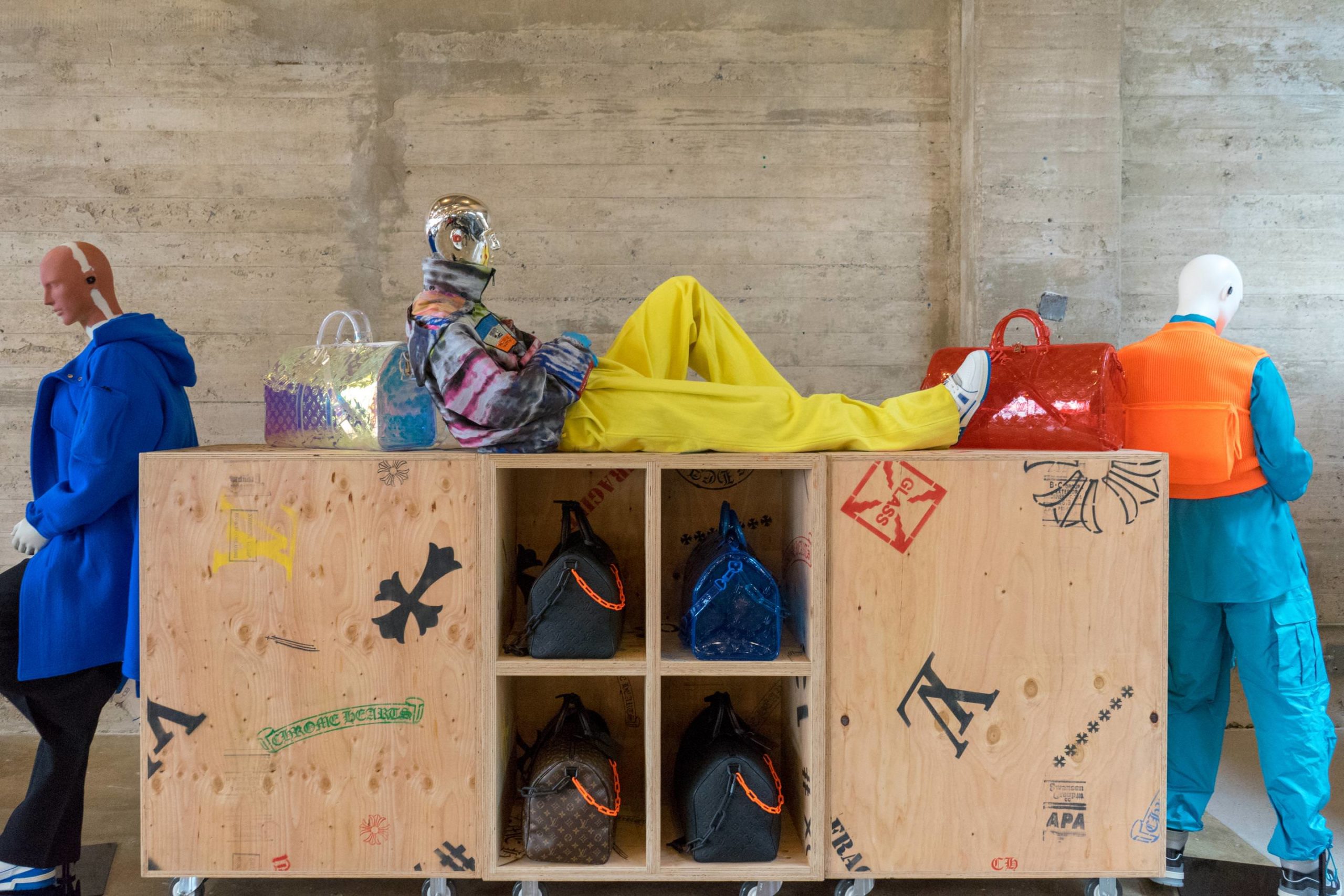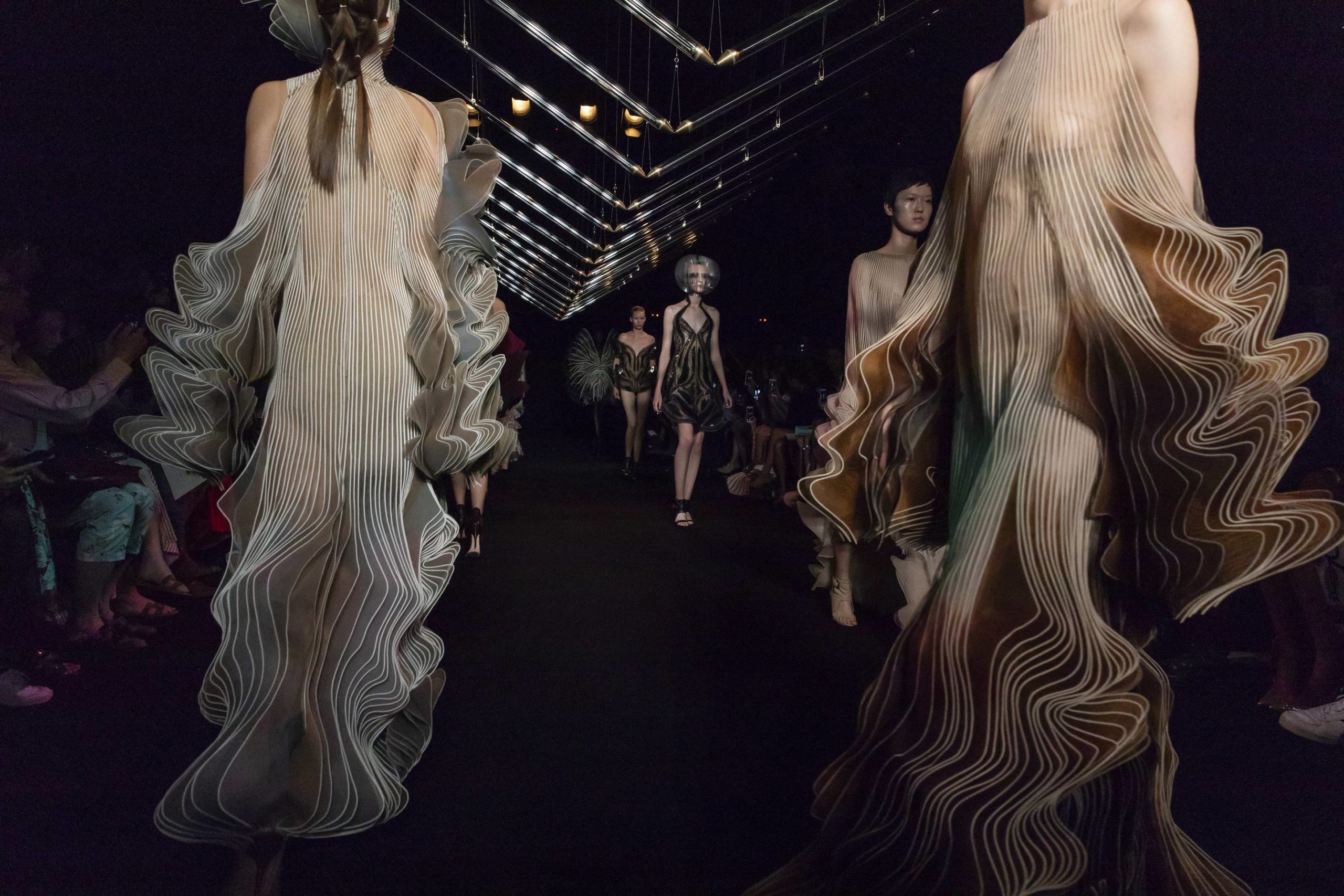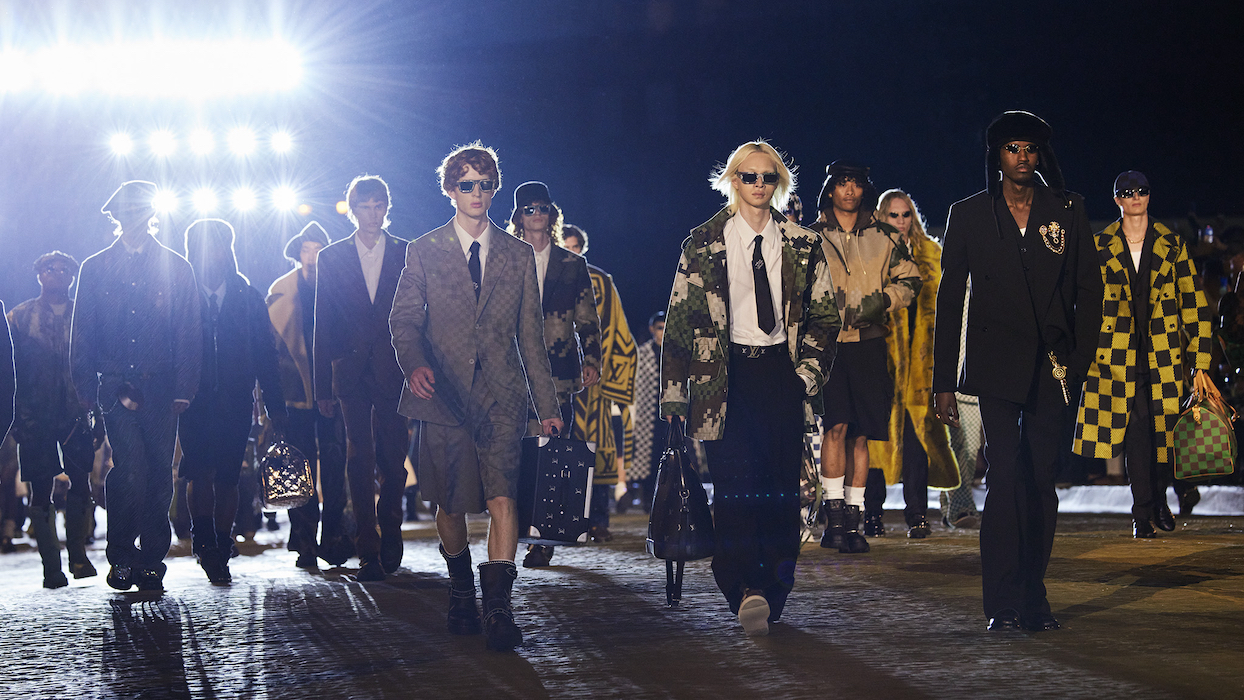Piotrek Panszczyk and Beckett Fogg established AREA in 2014. As an homage to the iconic 1980s Manhattan nightclub that blended art and performance with themed activations, the fashion brand’s name became synonymous with glamorous party-girl looks. Over time, patrons caught on to the design studio’s labor-intensive craftsmanship and textile development, seen through innovative embellishment and eclectic storytelling. It was never solely about the carefree, crystal-trimmed dress, it was also about the layered tale it told.
Storytelling at AREA
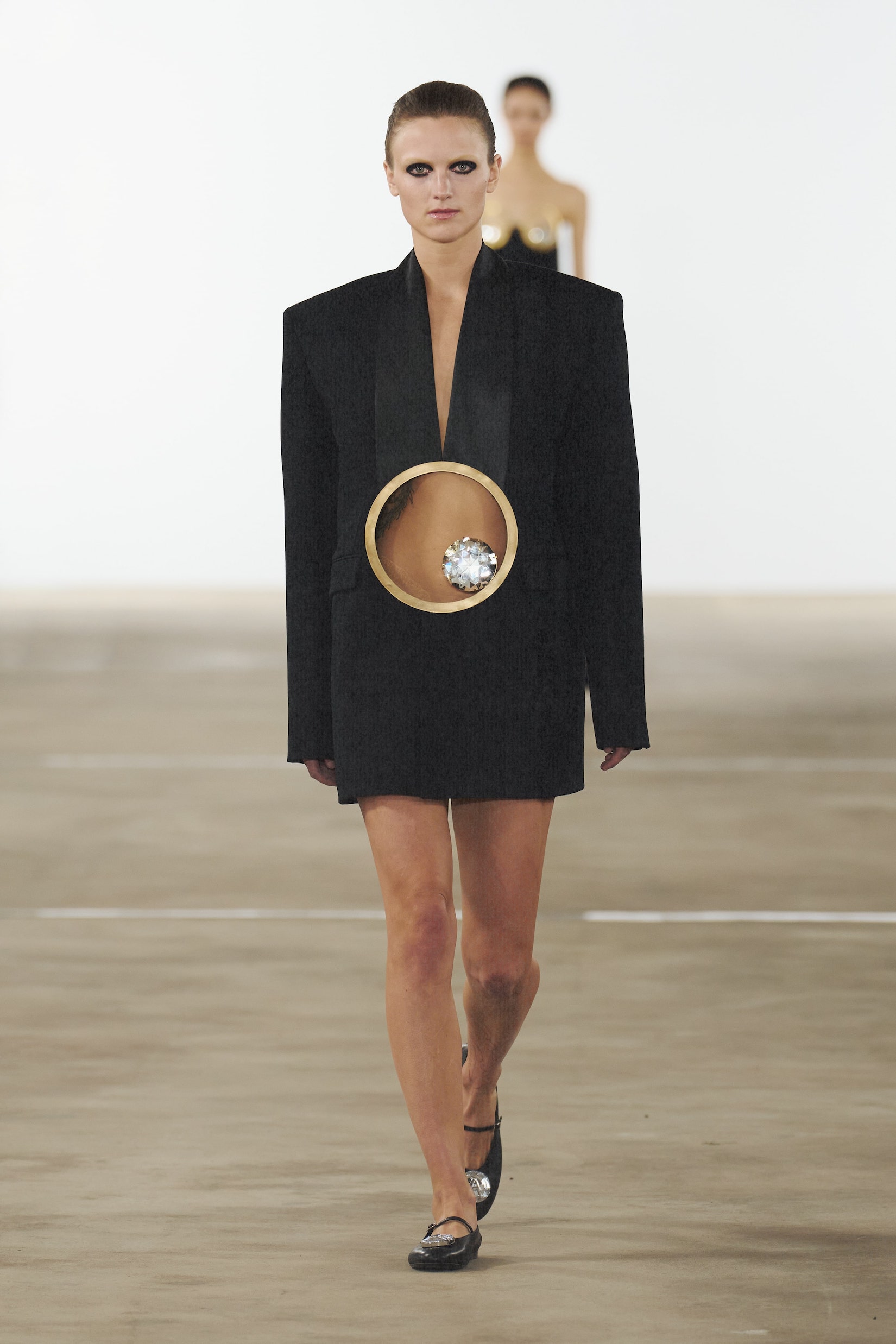 AREA’s Spring/Summer 2024 collection, photo by Dan McMahon, courtesy of AREA.
AREA’s Spring/Summer 2024 collection, photo by Dan McMahon, courtesy of AREA.
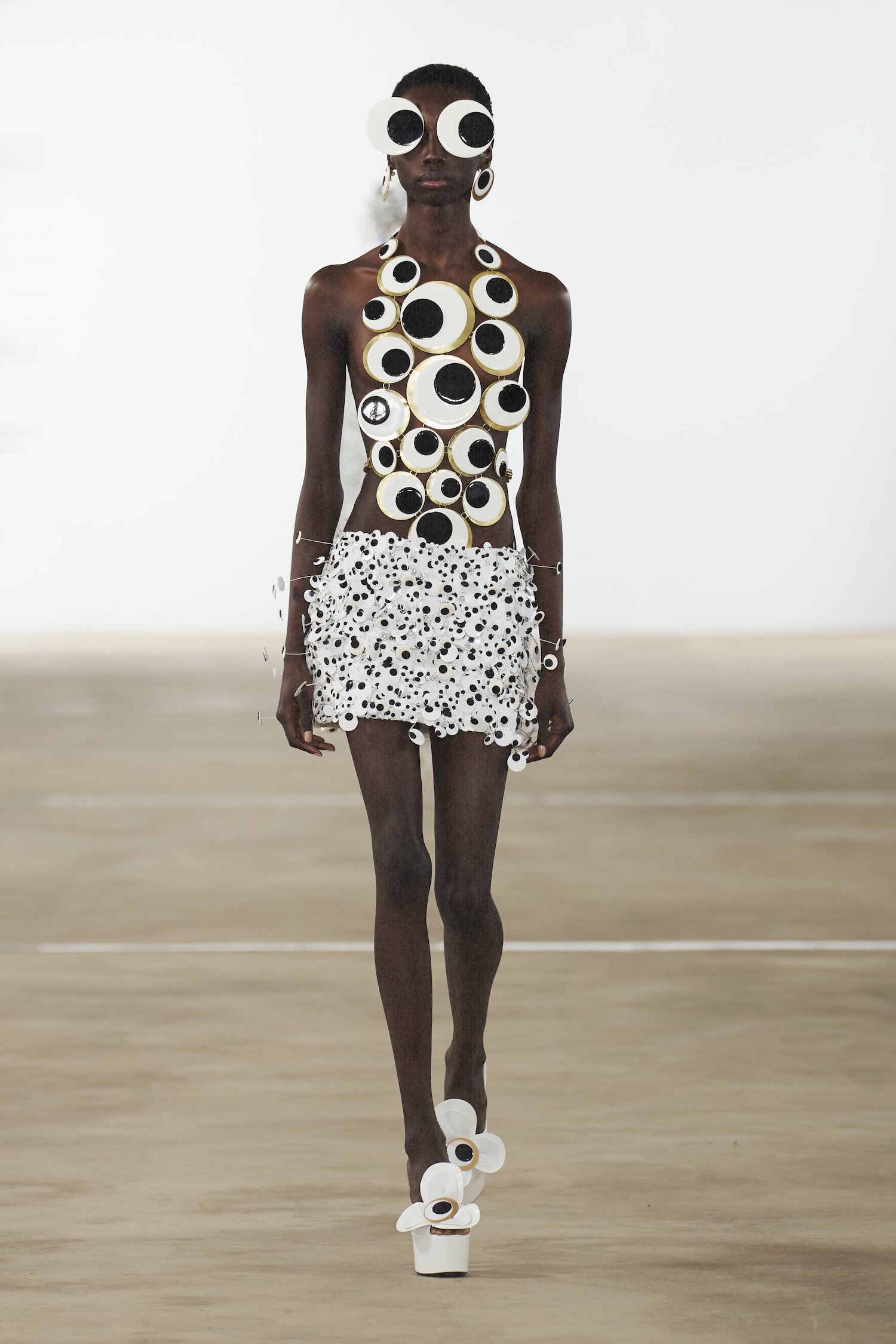 AREA’s Spring/Summer 2024 collection, photo by Dan McMahon, courtesy of AREA.
AREA’s Spring/Summer 2024 collection, photo by Dan McMahon, courtesy of AREA.
Starting from a concept of play, AREA takes a closer look at culture and conceptually dissects its products, anecdotes, and histories to reimagine what it can say today. Last year for its Spring/Summer 2023 “Fabulous Fruits” collection, that starting point was fruit. Invites included rubber bananas, the show’s set was adorned artificial by fruit flies, and garments recalled famous and unfamiliar shapes, hues, and patterning—like Andy Warhol’s iconic motif.
For Fall/Winter 2023, AREA explored the primal materials we’ve depended on and glorified as a status symbol, and that then grew grotesque, like fur. By breaking down these notions and redefining these ideas with alternative materials and volumes, the collection dug deeper into symbols of aristocracy, wealth, and excess. Most recently, for Spring/Summer 2024, AREA’s starting point was eyes, leading to cartoon-like shapes and straightforward circles within circles.
In celebration of its tenth anniversary, amid moving its production from New York to Milan, Panszczyk shared with Whitewall how AREA thinks about innovation as problem-solving and why controversial cultural topics make for great fashion.
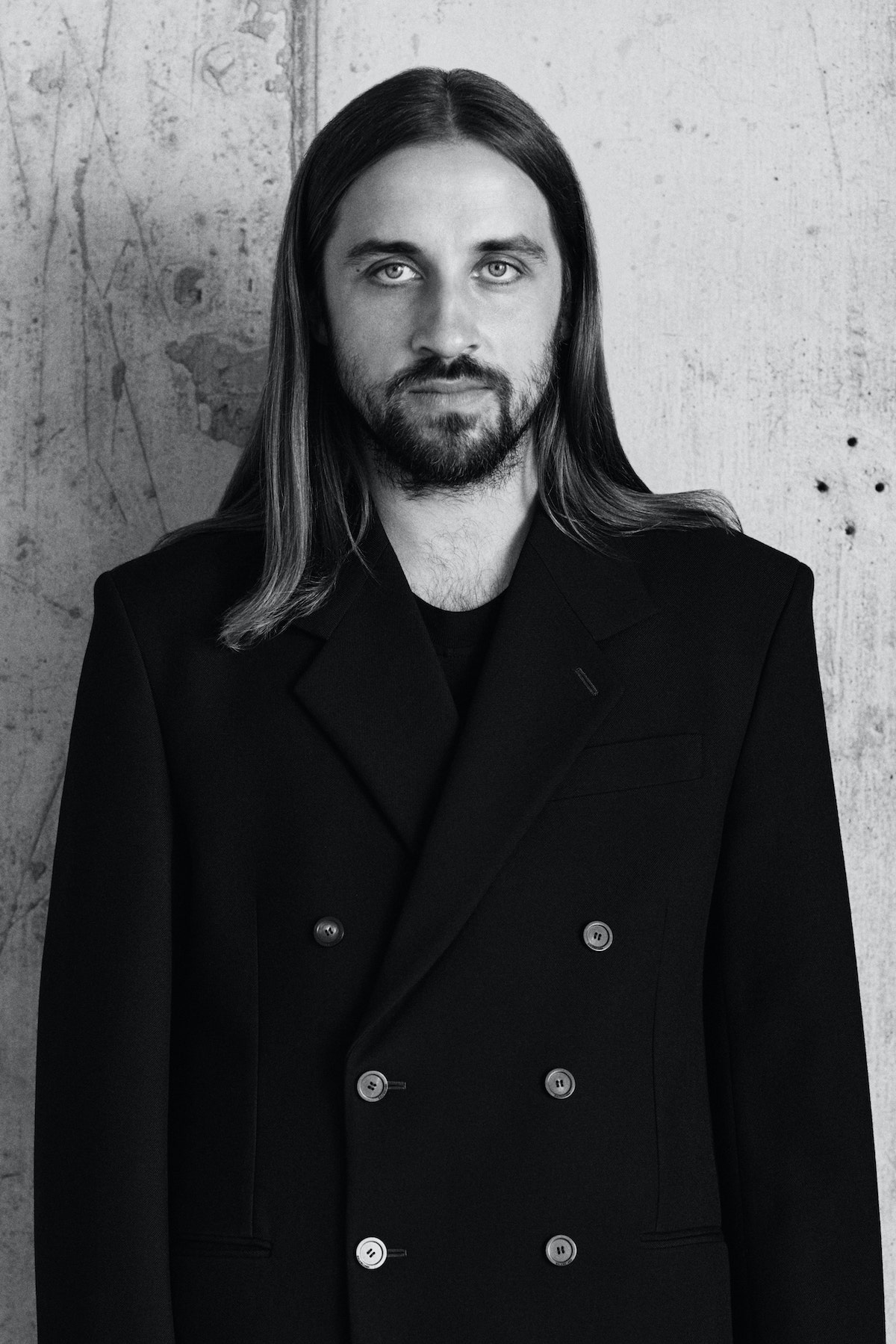 Piotrek Panszczyk, portrait courtesy of AREA.
Piotrek Panszczyk, portrait courtesy of AREA.
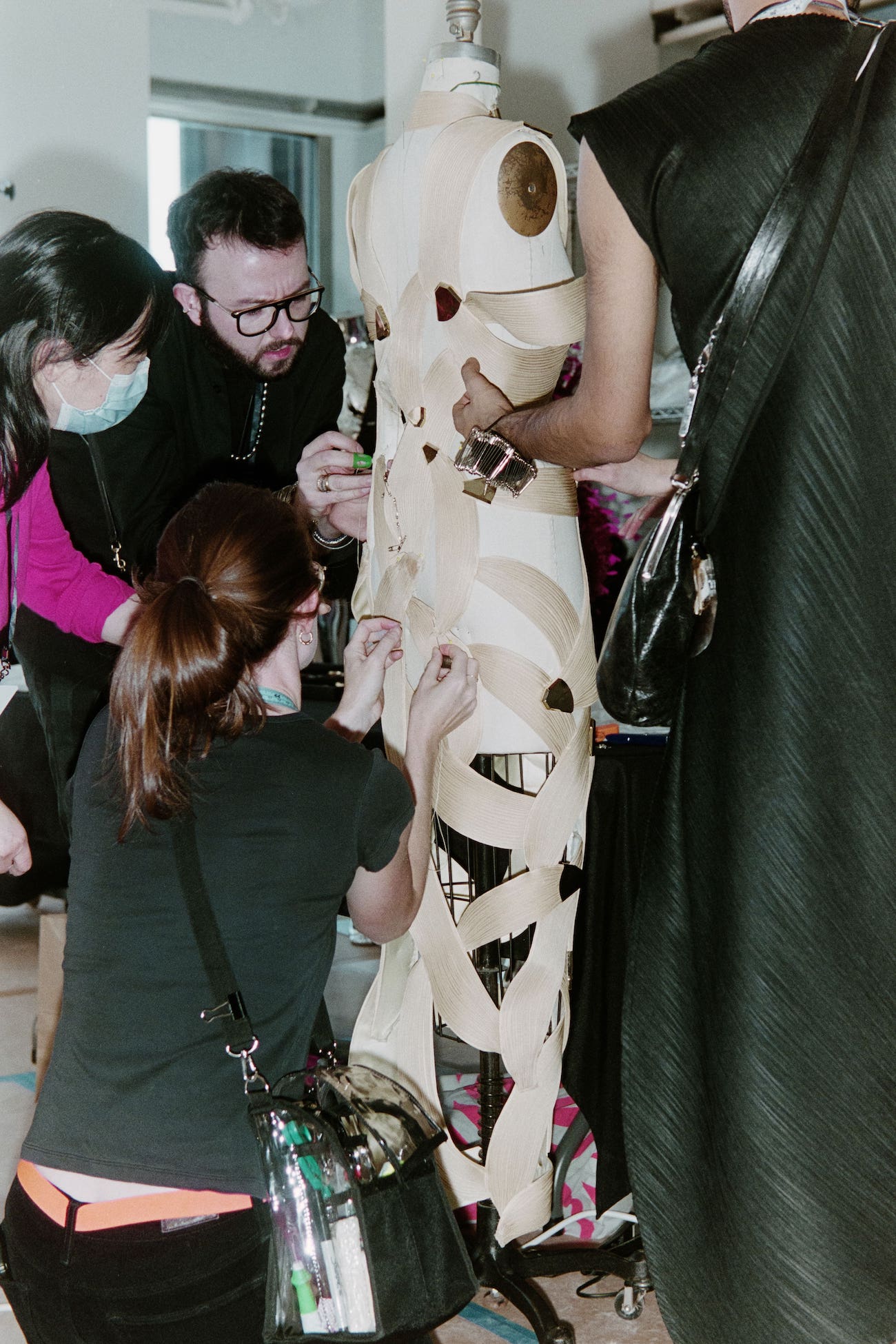 Photo by Dan McMahon, courtesy of AREA.
Photo by Dan McMahon, courtesy of AREA.
WHITEWALL: AREA is nearly synonymous with New York City. Why is it moving to Italy?
PIOTREK PANSZCZYK: It originally started by doing the more specialty things in Italy, like couture and show pieces. We quickly saw that there’s a different type of design palette here as well. You know, I’m European, and I think my whole network in design was actually here and not New York. When I moved to New York, it was tunnel vision, and building the brand from there, but a lot of people I work with on a design level were actually here. And they’ve worked at a lot of different places. After they had their careers at other places, we decided to reconnect and start restructuring how we go about making.
What I really like about it now is that there’s way more contact. It’s easier to go to a supplier and sit with them and develop things. It’s a different way of working. In New York, we did almost everything ourselves. We had our own atelier, which was great, but it’s very expensive. You can grow until a certain point, but after that, you need other expertise. The great thing about Italy, which I love, is that there is so much expertise. It’s truly in their blood—the way they work, the way they think about clothing. It’s a different mindset than New York. I love New York for something else, but I started missing this true love and affection for the craft itself.
WW: Does how you approach designing a collection vary?
PP: Yes. It depends on the collection itself. If it’s more about craft, then it starts being about a certain technique—or the rejecting of a material versus a material. That can be a concept. Sometimes, it’s super thematic. For instance, our previous spring collection was all about this idea of fruits, and in an almost philosophical or metaphorical way. Things that are vibrant, but become beautiful in their own way through decay, and kind of relating that back to culture—the way we age, the way ideas age. Inspiration is always a connector for me to a moment in time. I love to put things under the loop that we classically think are beautiful, that we find the norm or culturally standards, and reframe that idea to show it through different lenses.
It’s about thinking about ideas that are banal, but can be controversial, and finding a middle ground to look back into its history and analyzing it. Fruit was interesting because it’s so normal and everyday, but you can have a fruit print that doesn’t say anything other than freshness. But if you look into art and history, it has to do with culture, with race, politics, feminism. There are so many levels. When I see a banana, I think about Josephine Baker, but also Andy Warhol, which is almost the polar opposite of it. It’s about reframing it like that, then rethinking about ideas, product, and storytelling.
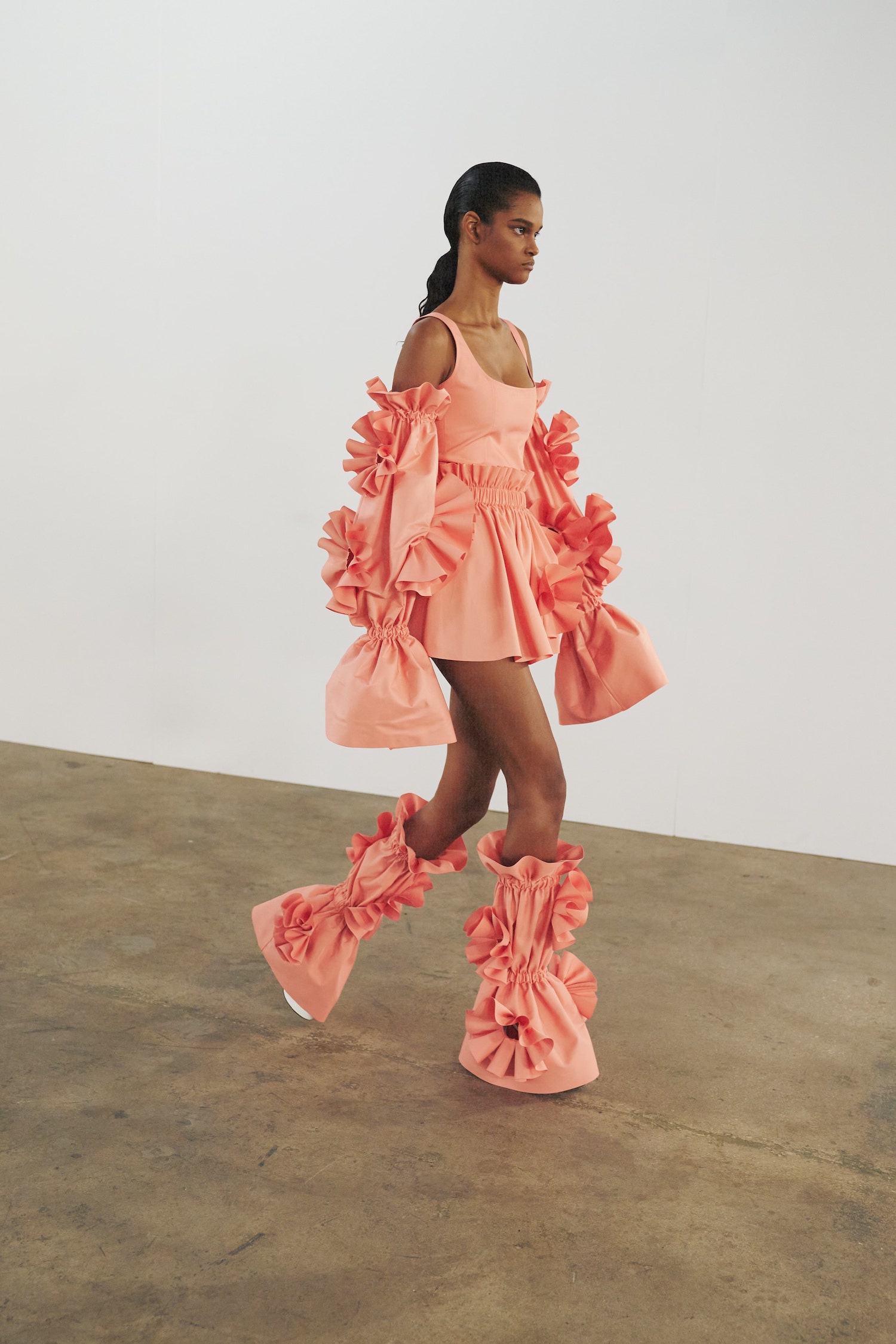 AREA’s Spring/Summer 2024 collection, photo by Dan McMahon, courtesy of AREA.
AREA’s Spring/Summer 2024 collection, photo by Dan McMahon, courtesy of AREA.
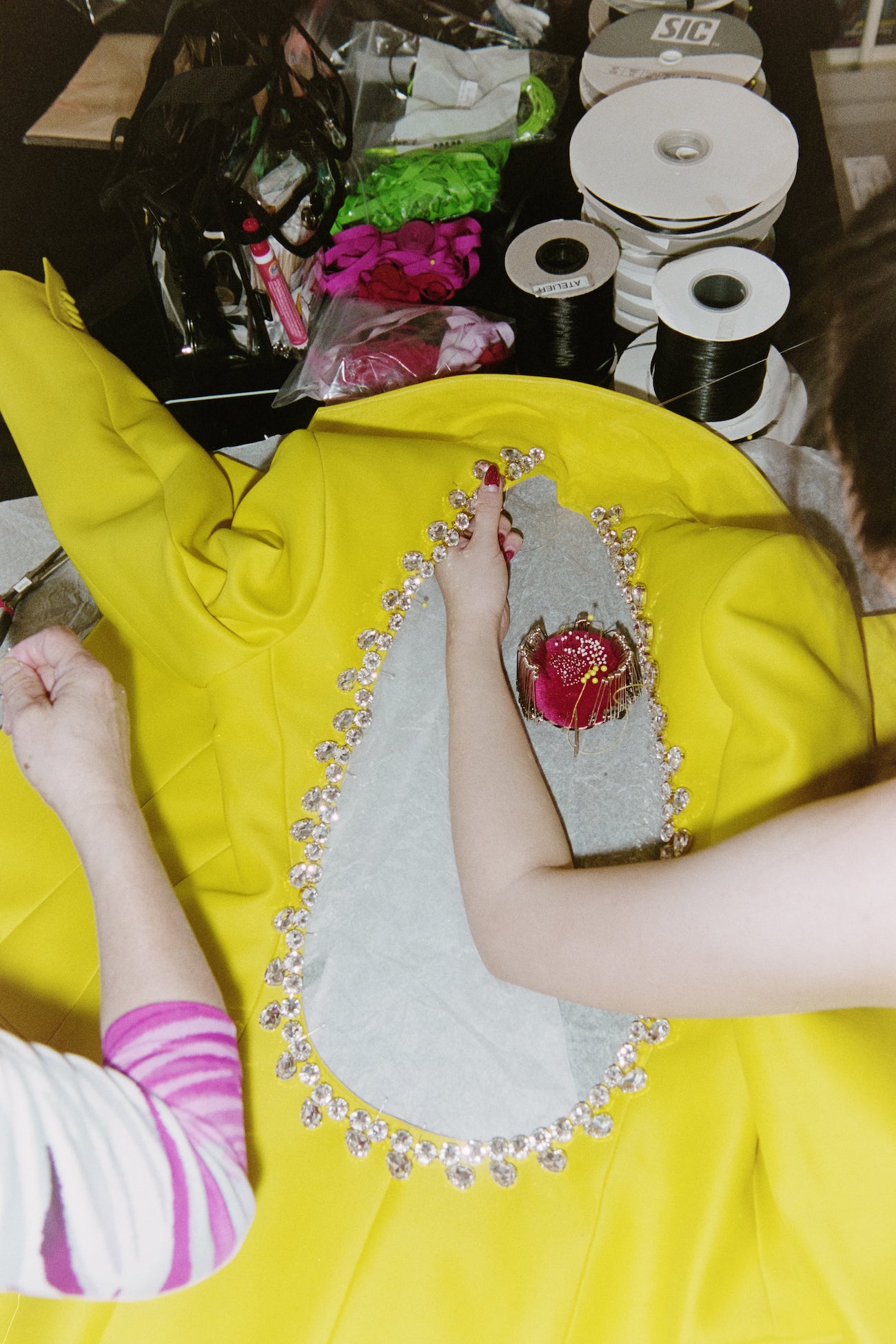 Photo by Dan McMahon, courtesy of AREA.
Photo by Dan McMahon, courtesy of AREA.
WW: AREA is known for its focus on craftsmanship, textile development, and innovative embellishment. How does digital innovation and technology impact the way you’re designing now?
PP: It impacts quite a lot. With us, what I think is the most prominent is the idea of weight. We do so much embellishment that’s metal or crystal, which always comes with weight, so that’s a huge aspect. There’s also much possibility with 3D printing now, as well. We can restructure and re-create that the way things are built.
Our last fall collection that was all about pyramids and ancient civilizations. We started building things that went top-up. We designed this major couture coat that had hundreds of extreme spikes that were embellished with crystals. What we saw quite fast when developing it was that with metal or crystal, we’d have a crazy weight problem. So we redeveloped everything through 3D printing. And to get the hand feel back, we airbrushed and antiquated in a hand way again. It’s about combining the two techniques together.
Craftsmanship, Innovation, and Sustainability at AREA
WW: How are you thinking about innovation in relation to other issues, like sustainability?
PP: It really makes us think about this relationship that we have with luxury. How can we recontextualize that, and educate people a bit through storytelling? Every collection that is so thematic, there’s variation, and so much of people’s work actually goes into it. It’s almost our duty to express that to the younger generation. Every time we release something, we’ll really give you an explanation of how much time went into it. It’s not just spit out by a machine. It’s a whole heap of people working on it. It’s about appreciating the slowness.
What about designing something that has a beautiful, crafted fabric that is developed through generations? The way of dyeing, like these mills have thought about for hundreds of years. How do you take something like that and combine that with embellishment for this time? It can still be glamorous but showcase people and the design thoughtfulness that went into it. And when it’s time to get rid of it, they can gift it to someone else. I want to think about the beauty of fashion almost like jewelry.
“What about designing something that has a beautiful, crafted fabric that is developed through generations?”
–Piotrek Panszczyk
WW: There’s something to be said for thinking about fashion and luxury as an investment that you have for the rest of your life.
PP: Exactly. It also does something to your train of thought, how you appreciate things that are truly beautiful. I always had this connection to luxurious things, but more just truly appreciating their beauty. Always keeping them, and truly wearing them, but being respectful of them. That’s a key thing.
Our last Fall/Winter 2023 collection was about these aspects of luxury and fashion—this thing that starts as a primal instinct, like fur as the first garment we ever had. But then looking at it through the ages, of how it became this status symbol; how it became about aristocracy; how it became about a wealth gap; and then transformed into something that people think is quite gruesome. We wanted to see how we can respect something, but renew it. We started really studying fur coats, beautiful pelts. Volume. Could we do something like that out of something less noble that’s almost a necessity, like denim? It’s about finding balance in guilty pleasures.






